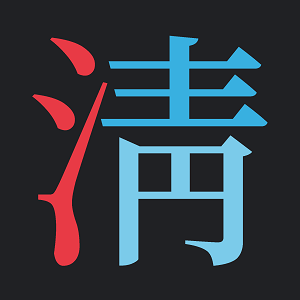淸
부수: 氵
획수: 11획
淸 has the meanings clear water, to clean, clean and pure.

淸 = 氵 + 靑
X = semantic + semantic/phonetic
• 氵 is a component form of 水. It depicts flowing water and represents the meaning ‘clear water’.
• 靑 is comprised of 龶 and 円 and represents ‘green’.
Evolution:
淸 = clear water ➔ to make clear ➔ to clean
淸 = clear water ➔ pure
靑 = 龶 + 円
• 龶 was originally 屮. It depicts sprouting vegetation and represents ‘green’.
• 円 is a distortion of 井 and is used for its sound. In Chinese and Japanese, 月 is used instead.
Mnemonic
Imagine a swampy pond 氵 with green vegetation sprouting 屮 to the surface. A landscaper decided to clean out 淸 and remove the vegetation, making the water pure again.
Vocab
| 淸酒 | 청주 | a clear rice wine |
| 淸溪川 | 청계천 | Cheonggye River |
| 淸掃 | 청소 | cleaning; sweeping |
| 肅淸 | 숙청 | purge; purification |
| 淸算 | 청산 | settlement (of debts) |
| 淸掃夫 | 청소부 | a street cleaner |
| 淸新 | 청신 | new; fresh |
| 淸涼 | 청량 | refreshing; cool |
| 血淸 | 혈청 | serum (blood) |
| 淸潔 | 청결 | cleanliness; tidiness |
| 淸涼 | 청량 | cool and refreshing |
| 淸楚 | 청초 | neat/clean elegance |
| 淸雅 | 청아 | pure elegance; graceful |
| 淸淨 | 청정 | purity; clearness and cleanness |
| 淸廉 | 청렴 | integrity; upright |
| 淸貧 | 청빈 | poor and honest |
| 淸白吏 | 청백리 | incorruptible official |
| 淸敎徒 | 청교도 | Puritan |
Additional notes
Note that Chinese and Japanese use 清 while Korean uses 淸. The difference between 青 and 靑 is negligible because 月 and 円 are both distortions of 井. Korean uses 淸(靑|円) because that is what’s used in the Kangxi dictionary.
Other resources
Image searches
Google
Bing
Yahoo Japan
Baidu (click 图片)
Sogou
Pinterest
Flickr
CJKV
CJKV Dict
Wikitionary 淸(Alternative|U+6DF8)
Wikitionary 清(Standard|U+6E05)
Unihan Database 淸(Alternative|U+6DF8)
Unihan Database 清(Standard|U+6E05)
Korean
Chinese
Written Chinese
Arch Chinese
ZDic
CC-Canto
Chinese Text Project
The Chinese University of Hong Kong (etymology)
Chinese Boost
Japanese
Takoboto
Jisho
JLearn.net
Sakura
The Kanji Map
Sentence Search
Immersion Kit
Vietnamese
Bibliography
Affiliate links help support uK.
— Daum 사전, [s.v. 淸].
— Grant, B.K. (1982). A Guide To Korean Characters: Reading and Writing Hangul and Hanja, [s.v. 981]. Seoul: Hollym.
— Outlier Dictionary of Chinese Characters, [s.v. 淸, 氵, 靑].
— Seely, C., Henshall, K.G., & Fan, J. (2016). The Complete Guide to Japanese Kanji: Remembering and Understanding the 2,136 Standard Japanese Characters, [s.v. 547]. Singapore: Tuttle Publishing.